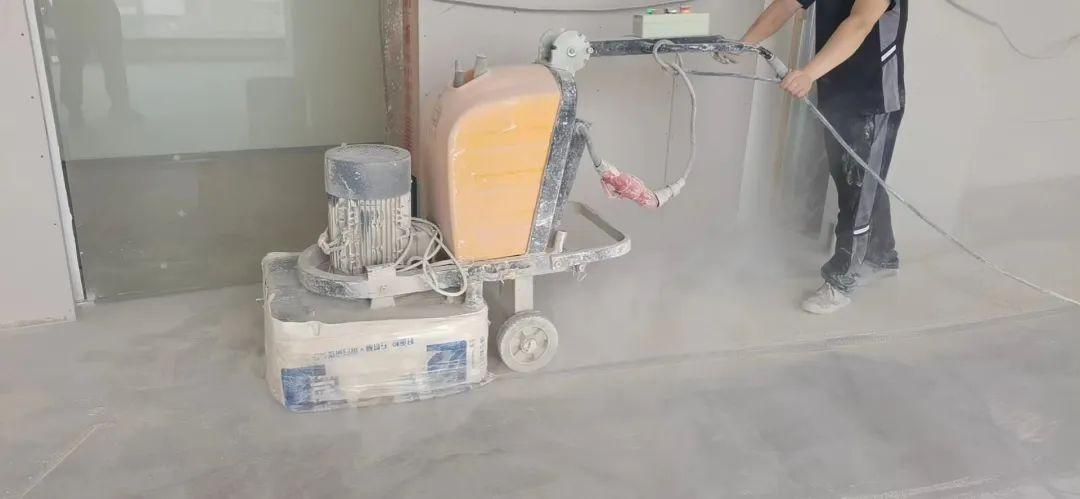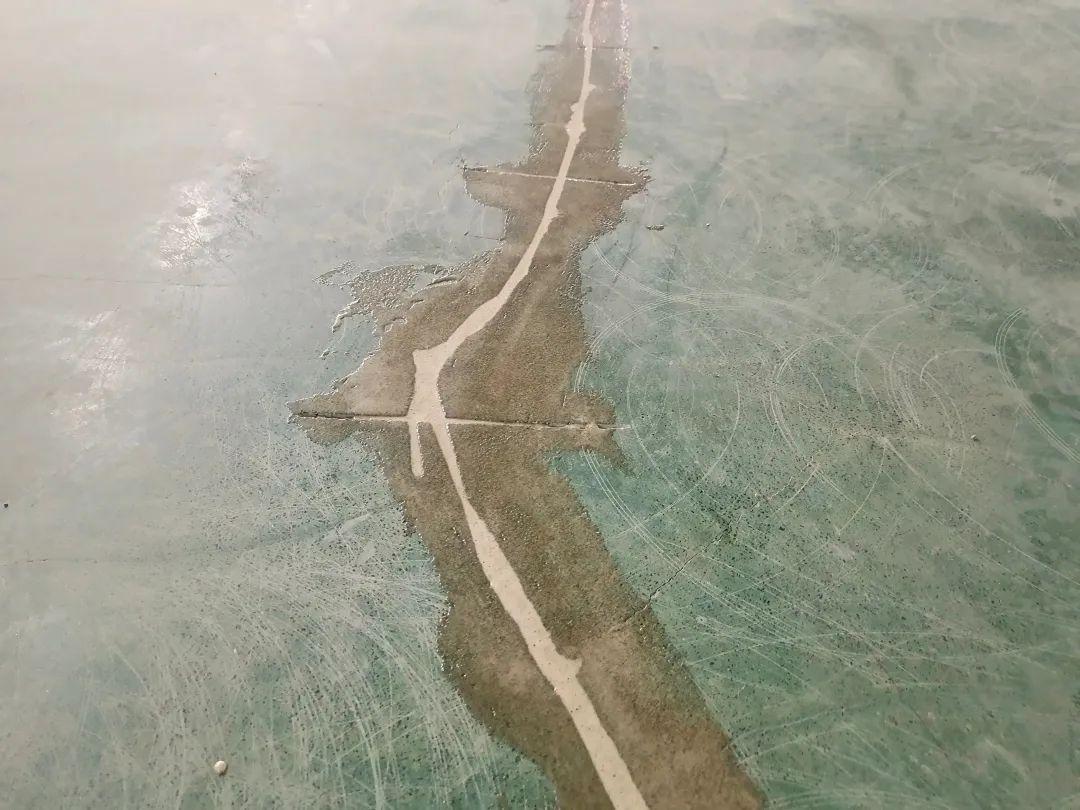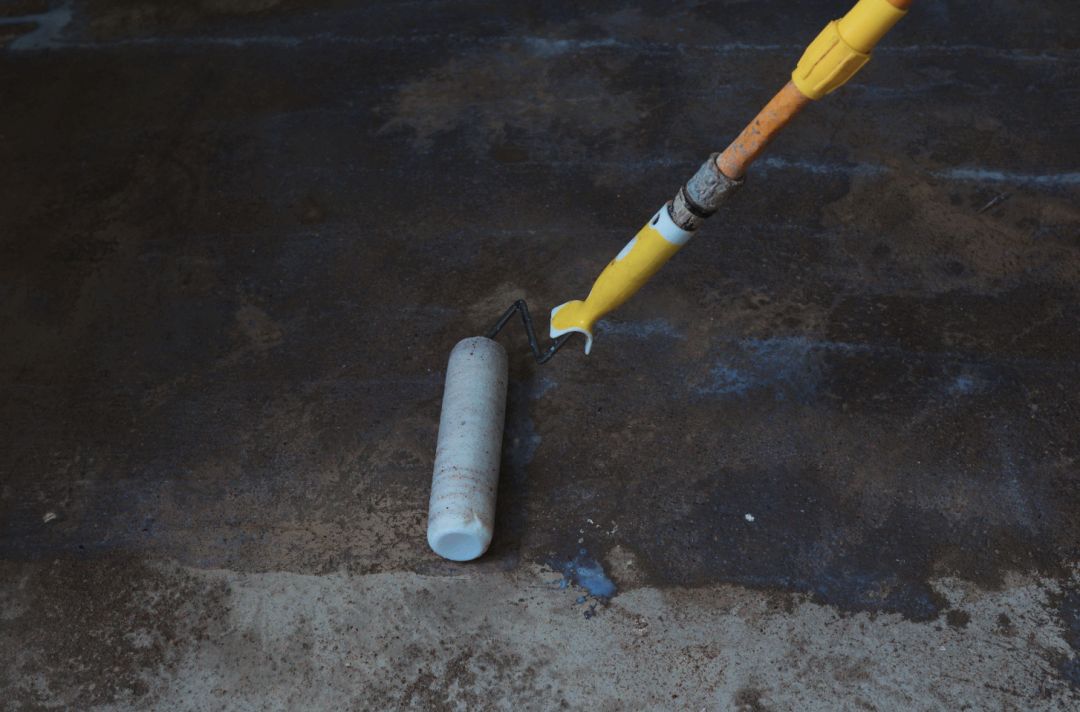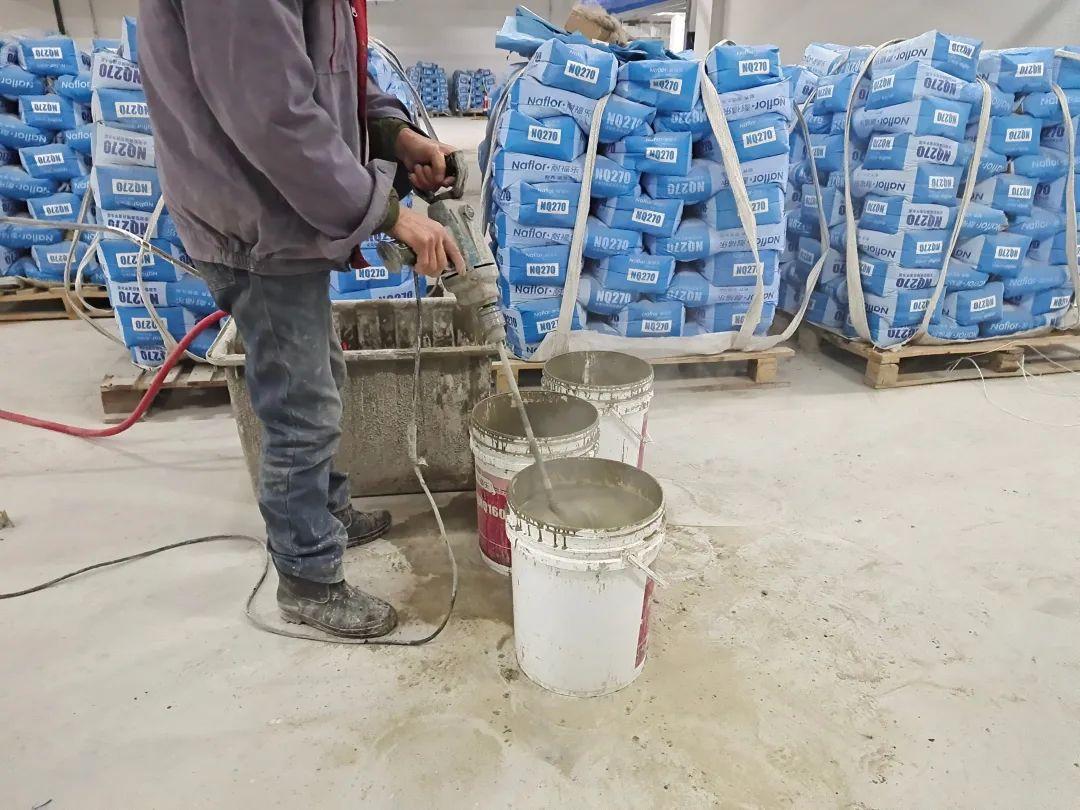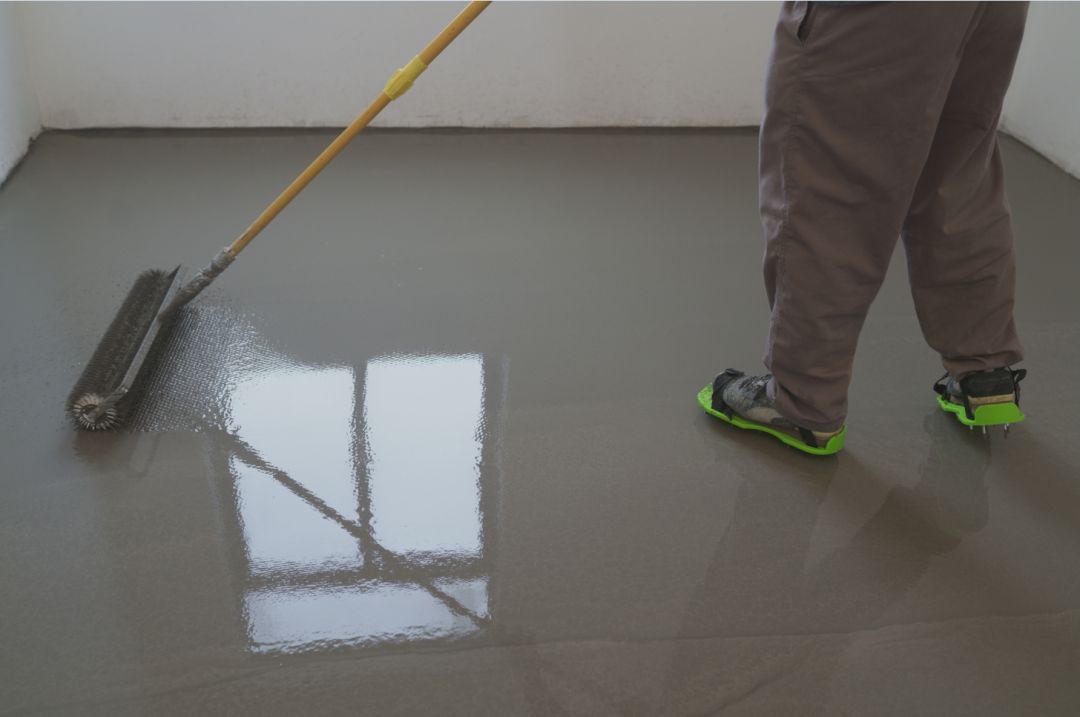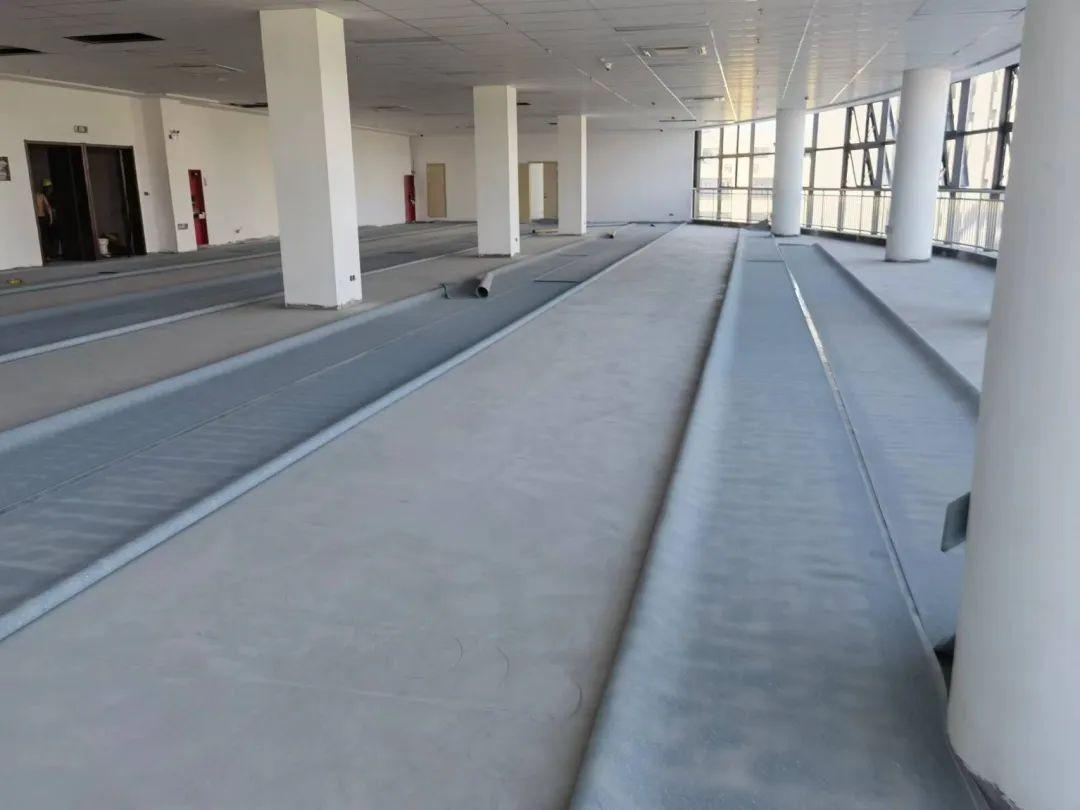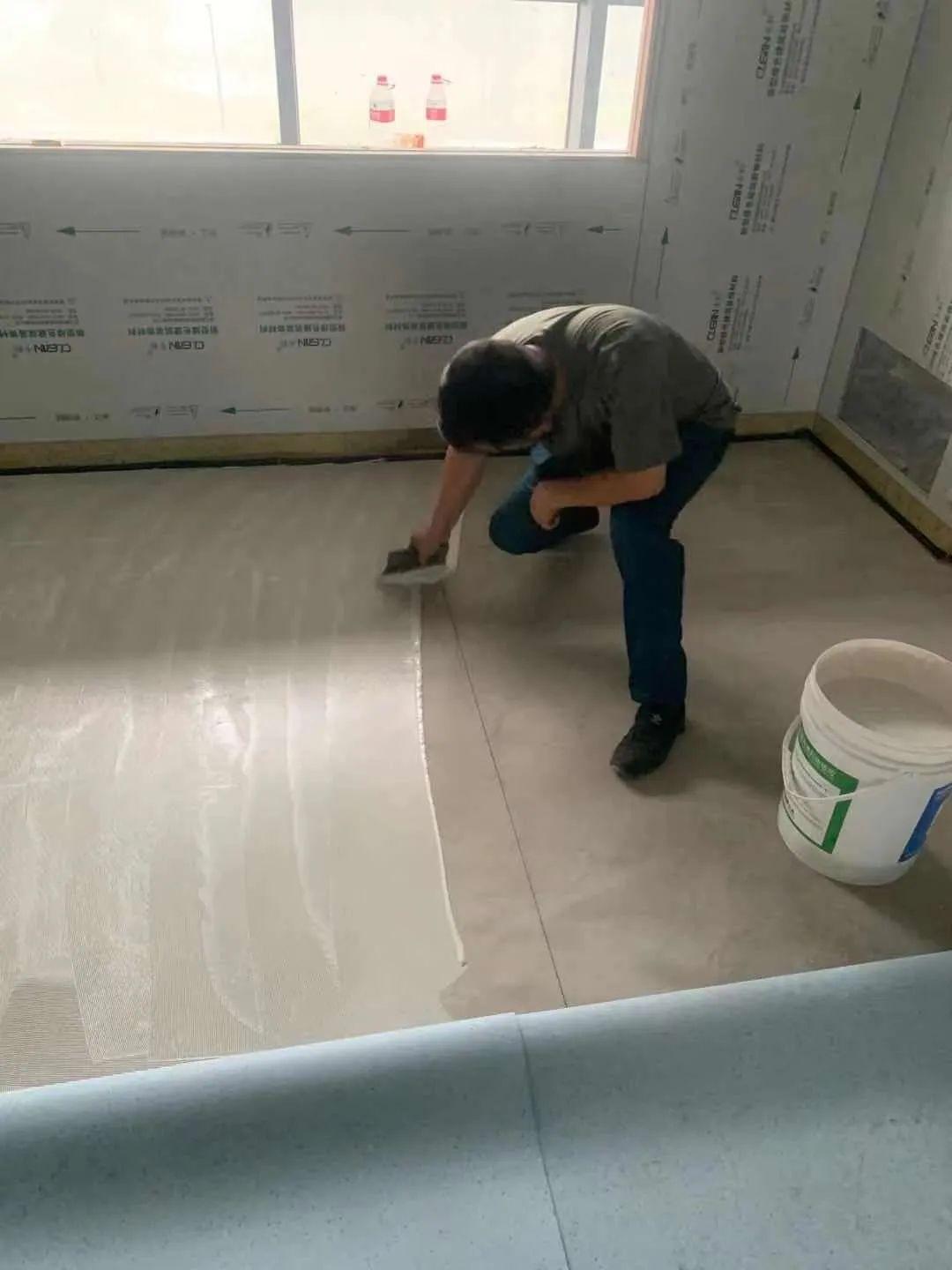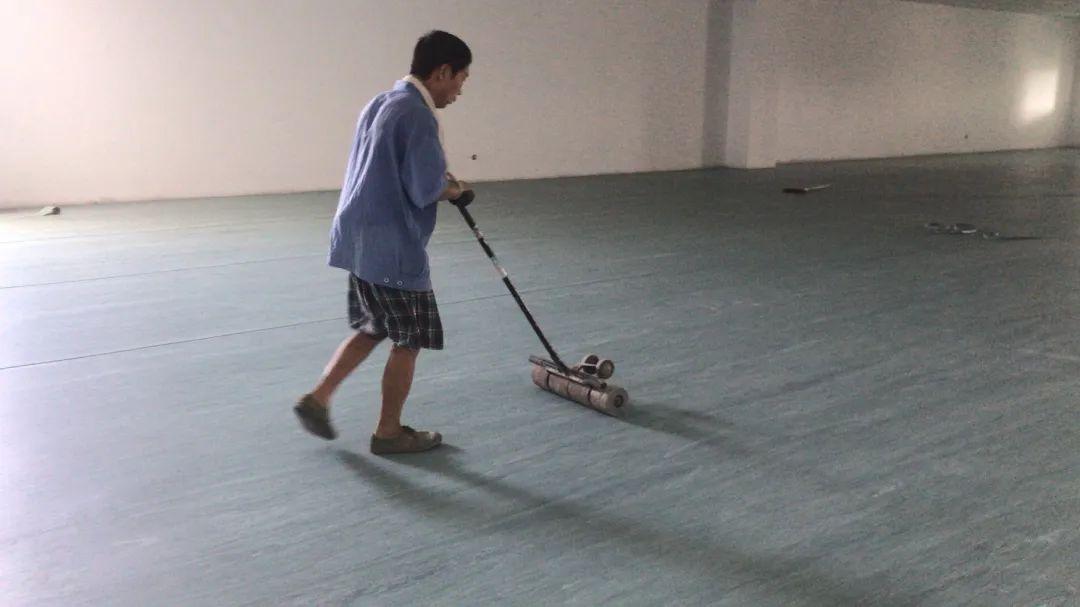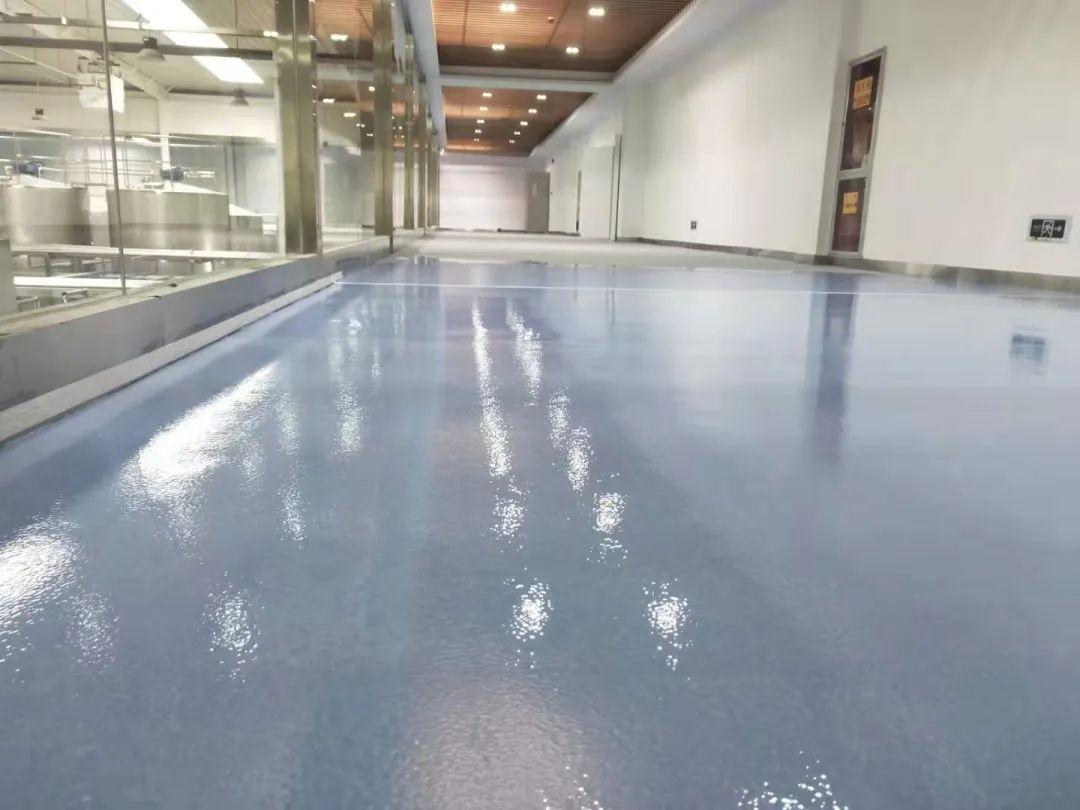The technology and technical requirements for resilient vinyl floor installation
1 Surveying the ground floor
(1). Base level requirements: It is recommended that the strength of the ground before the construction of the self-leveling platform should not be lower than the standard of concrete hardness C20. The base surface should be thoroughly checked, and the ground pull-out strength should be tested with a ground pull-out strength tester to determine the concrete cushion. The tensile strength of concrete should be greater than 1.5Mpa. The overall flatness requirements should meet the relevant standards of the national ground acceptance specification (the flatness of the cement-based self-leveling ground base should not be greater than 4mm/2m).
(2). The new concrete floor needs to be maintained for more than 28 days, and the moisture content of the base layer is less than or equal to 4%.
(3) Grind the dust of the base layer, the surface layer of weak concrete, oil stains, cement slurry and all loose substances that may affect the bond strength with a grinder, vacuum and clean up, so that the base surface is smooth and dense, and the surface is free of sundries, No loose, no empty drums.
(4) If there are damaged and uneven base layers and weak layers or uneven potholes, the weak layers must be removed first, the impurities must be removed, and the concrete should be repaired with high-strength concrete to achieve sufficient strength before proceeding to the next step process.
(5)Before the construction of ground works, the grass-roots level should be inspected according to the current national standard GB50209 "Code for Acceptance and Acceptance of Construction Quality of Building Ground Works", and the acceptance is qualified.
Test the strength of the ground test the hardness of the ground test the moisture of the ground test the temperature of the ground test the flatness of the ground
2. Floor pre treatment
(1). The grinding machine is equipped with appropriate grinding discs to grind the floor as a whole to remove paint, glue and other residues, raised and loose plots, and empty plots. For small areas of oil pollution, a low concentration should be used. The pickling solution is used for cleaning; for large-scale oil pollution with serious pollution, it must be treated by degreasing, degreasing, grinding, etc., and then self-leveling construction.
(2). Use a vacuum cleaner to vacuum and clean the floor to remove the floating dust that is not easy to clean on the surface, so as to enhance the bonding force between the coating and the ground.
(3). Cracks are a problem that is prone to occur on the ground. It will not only affect the beauty of the floor, but also seriously affect the life of the floor, so it should be dealt with in time. Under normal circumstances, the cracks are filled with mortar for repair (using NQ480 high-strength two-component resin moisture-proof film and quartz sand to repair the cracks), and large areas can be refurbished according to the needs of customers.
3. Base Pretreatment - Primer
(1). The absorbing base layer such as concrete and cement mortar leveling layer should be sealed and primed with NQ160 multi-functional water-based interface treatment agent diluted with water at a ratio of 1:1.
(2). For non-absorbent base layers such as ceramic tiles, terrazzo, marble, etc., it is recommended to use NQ430 high-strength non-absorbent interface treatment agent for primer.
(3). If the moisture content of the base layer is too high (>4%-8%) and it needs to be constructed immediately, NQ480 two-component moisture-proof film can be used for primer treatment, but the premise is that the moisture content of the base layer should not be greater than 8%.
(4)The construction of the interface treatment agent should be uniform, and there should be no obvious liquid accumulation. After the surface of the interface treatment agent is air-dried, the next self-leveling construction can be carried out.
4, self-leveling - mixing
(1). According to the water-cement ratio on the product package, pour the material into a mixing bucket filled with clean water, and stir while pouring.
(2). In order to ensure even self-leveling stirring, please use a high-power, low-speed electric drill with a special stirrer for stirring.
(3). Stir the ingredients until there is a homogeneous slurry without lumps, then let it stand for about 3 minutes, stirring once more briefly.
(4)The amount of water added should be strictly in accordance with the water-cement ratio (please refer to the corresponding self-leveling instructions). Adding too little water will affect the self-leveling fluidity. Too much will reduce the strength of the cured floor.
5. Self-leveling - paving
(1). Pour the stirred self-leveling slurry on the construction area, and then scrape it slightly with the help of a special tooth scraper.
(2). Then the construction personnel put on special spiked shoes, enter the construction ground, and use a special self-leveling air release roller to gently roll on the self-leveling surface to release the air mixed in the stirring to avoid air bubbles and pitted surfaces and the height difference of the interface.
(3). After the construction is completed, please close the site immediately, prohibit walking within 5 hours, avoid the impact of heavy objects within 10 hours, and lay the PVC elastic floor after 24 hours. In winter , the laying of the floor should be carried out 48-72 hours after the self-leveling construction.
(5)If the self-leveling cement needs to be finely ground and polished, it should be carried out after the self-leveling cement is completely dry.
6, the paving of resilient vinyl floor - pre-laying and cutting
(1)Whether it is a coil or a block, it should be placed on site for more than 24 hours to restore the memory of the material and the material temperature is consistent with the construction site.
(2) Use a special trimmer to cut and clean the burrs of the coil.
(3) When the materials are laid, there should be no joints between the two piece materials.
(4)When the roll is laid, the joining of the two piece materials should be overlapped and cut, generally requiring an overlap of 3 cm. Be careful to keep to cut by one time rather than more times.
7, the pasting of vinyl floor
(1) Select the glue and squeegee that are suitable for the resilient floor to be laid.
(2). When laying the flooring roll material , need fold one end . First clean the ground and the vinyl material back , and then squeegee on the ground surface.
(3) When paving the flooring tiles material, please turn the tiles from the middle to both sides, and also clean the ground and the back of the floor before gluing and pasting.
4.Different glues have different requirements during construction. For specific construction requirements, please refer to the corresponding product manual for construction.
8: Pavement of resilient vinyl floor - exhaust, rolling
(1) After the resilient floor is pasted, firstly use a cork block to push the floor surface to level it and squeeze out the air.
(2). Then use a 50 or 75 kg steel roller to roll the floor evenly and trim the warped edges of the splicing in time and ensure that all the glue is adhered to the back of the floor.
(3) The excess glue on the floor surface should be wiped off in time, so as not to be difficult to remove on the floor after curing.
(4)After 24 hours of paving, do the slotting and welding work.
9, the cleaning and maintenance of resilient vinyl floor
(1). The elastic floor series floors are developed and designed for indoor places, and are not suitable for laying and use in outdoor places.
(2). Please use Nafura floor protective film to paint the elastic floor, which perfectly make the floor be durability, anti-fouling and antibacterial of the elastic floor, and prolonging the use of the floor.
(3). High-concentration solvents such as toluene, banana water, strong acids and strong alkali solutions should be avoided on the floor surface, and inappropriate tools and sharp scrapers should be avoided to use on the floor surface.
10, The related tools to use for resilient floor
(1). Floor treatment: surface humidity tester, surface hardness tester, floor grinder, high-power industrial vacuum cleaner, wool roller, self-leveling mixer, 30-liter self-leveling mixing bucket, self-leveling tooth scraper, spikes, self-leveling Flat deflate.
(2). Floor laying: floor trimmer, cutter, two-meter steel ruler, glue scraper, steel pressure roller, slotting machine, welding torch, moon cutter, electrode leveler, combined scriber.
Post time: Nov-02-2022


